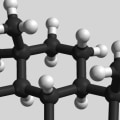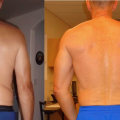Most men experience an improvement in symptoms four to six weeks after taking testosterone replacement therapy, although changes, such as increased muscle mass, can take three to six months. Usually, the test results can take 2 to 7 days. The length of time needed to receive the results depends on the laboratory and the day of the week when the test is requested. For men who are prescribed testosterone replacement therapy, it usually takes three to six months to take effect, Farooq says.
Before puberty, the testosterone level in boys is usually low. This causes children to develop a deeper voice, develop larger muscles, produce sperm, and have facial and body hair. The level of testosterone starts to decline around age 40, and then gradually decreases in older men. Almost all participants practiced strength sports and the most commonly used androgens were testosterone (96%), trenbolone (53%) and drostanolone (39%), although product labels are often unreliable.
Free testosterone can also be tested in people who have a condition that can change SHBG levels, such as hyperthyroidism or certain types of kidney disease. Farooq says men should be screened for sleep apnea before receiving treatment for low testosterone levels. Keep in mind that because your levels are usually higher in the morning, your doctor may want to perform the test during the morning hours. The number of men using testosterone replacement therapy in the United States has increased dramatically in recent years.
Unbound testosterone (free testosterone) can be tested if a man or woman has sexual problems. Anabolic steroids can severely, and even permanently, affect testosterone production and fertility, new research suggests. In almost all men, testosterone levels returned to normal three months after the end of the cycle and to 100% after 12 months, provided that they had normal gonadal function at the start of the study. Most of the testosterone in the blood is bound to a protein called sex hormone binding globulin (SHBG).
Men with type 2 diabetes and low testosterone levels performed better on memory tests when they received testosterone replacement therapy, a small experiment. A common topic of discussion in the medical community is the effect of a lower than average testosterone count on sexual desire, motivation, and energy levels in men. Although only men who had not used androgens in the three months prior to the start of the study were allowed to participate, 37 participants had a low total testosterone concentration or a total sperm count of less than 40 million at the start of the study, suggesting that they already had gonadal dysfunction. Testosterone, the main sex hormone in men, stimulates sexual desire and helps regulate other metabolic activities.
All men with an intact prostate who regained higher testosterone levels than those of neutered men had an increase in prostate-specific antigen, which could represent a return to the pre-treatment baseline. When the testosterone level is low, the pituitary gland releases a hormone called luteinizing hormone (LH).






